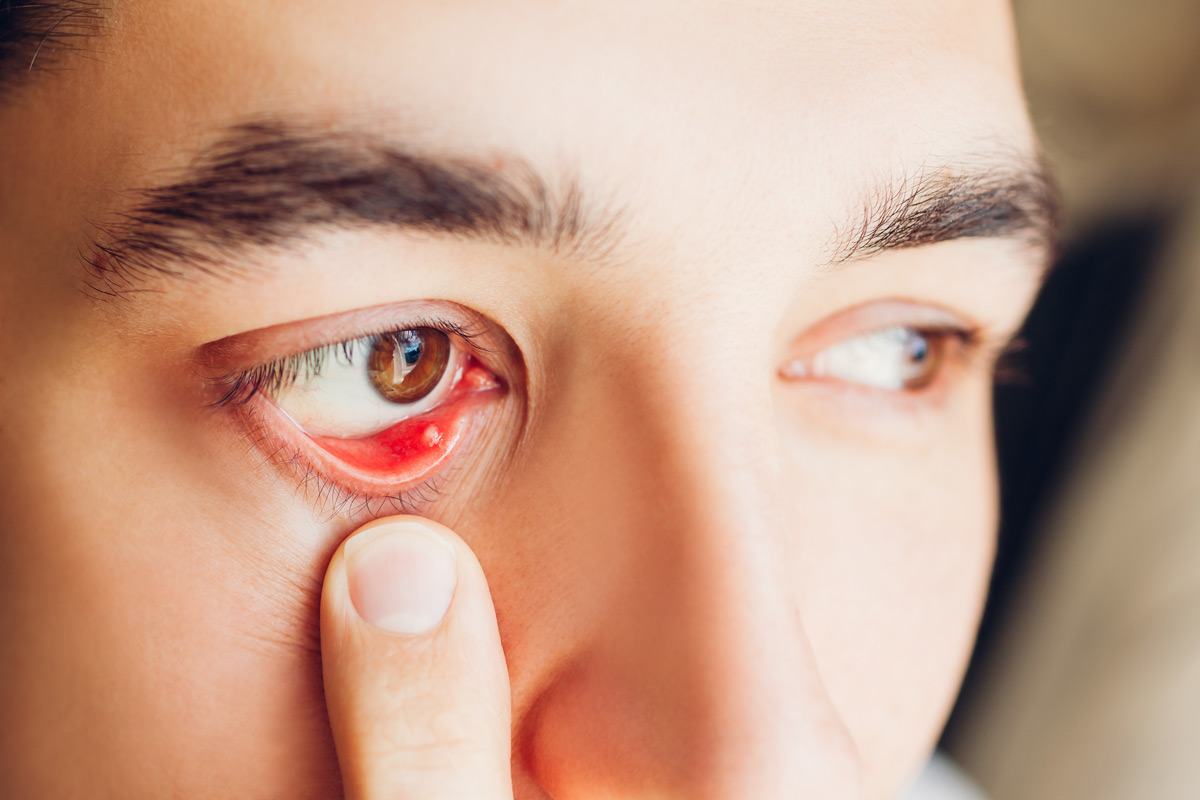An internal stye (hordeolum) is an inflamed and infected oil gland on the inner edge of your eyelid. Symptoms include eyelid pain, tenderness and swelling. Your eye may also tear up a lot. Treatment starts with home remedies like using a warm compress. If the stye doesn’t go away in about a week, you may need a minor procedure to drain the stye.
Advertisement
Cleveland Clinic is a non-profit academic medical center. Advertising on our site helps support our mission. We do not endorse non-Cleveland Clinic products or services. Policy

An internal stye (hordeolum) is an inflamed oil gland on the inner edge of your eyelid. A bacterial infection is the usual cause.
Advertisement
Cleveland Clinic is a non-profit academic medical center. Advertising on our site helps support our mission. We do not endorse non-Cleveland Clinic products or services. Policy
When you have an internal stye, an oil gland swells up and forms an abscess (pocket of pus). This leads to pain and other symptoms. While the stye may go away on its own, some people need a minor procedure to drain the pus and clear the inflammation.
Primary care providers often see and diagnose styes. Your provider may refer you to an ophthalmologist or optometrist if your stye isn’t going away or is getting worse.
The main difference is where they’re located on your eyelid. An external stye forms on the outer edge of your eyelid. It faces outward and looks a bit like a small pimple. An internal stye develops on the inner side of your eyelid. It faces inward, toward your eyeball. An internal stye looks like a small bump, and it may be yellowish or white.
Internal styes are usually more painful and last longer than external styes.
Children and adults of all ages can develop internal styes. They’re especially common among school-age children and adults age 30 to 50.
Overall, a stye is one of the most common eye conditions. However, internal styes aren’t as common as external styes.
An internal stye is painful. You may experience:
Advertisement
Symptoms often appear suddenly, such as when you first wake up in the morning.
An internal stye forms when you have an infection in one of your meibomian glands. You have dozens of these glands along the edges of your eyelids. They produce oils that help protect and lubricate your eyes.
But like other glands in your eyes, your meibomian glands can become infected. Usually, a type of bacteria called Staphylococcus aureus is the culprit. This bacterial infection may happen if you:
A main risk factor is whether you’ve had a stye in the past. In many people, styes keep coming back. So, if you’ve had a stye before, you’re more likely to have one again.
You also face a higher risk if you have any of the following conditions:
A stye usually isn’t contagious. However, the pus that drains from your stye contains a small amount of bacteria that could potentially spread to others. So, it’s a good idea to wash your hands after touching your eye area. Plus, wash your pillowcase and towel/washcloth daily.
Unless a provider tells you otherwise, it’s OK to go to work or school.
Healthcare providers diagnose an internal stye by examining your eye and talking with you about your symptoms. Usually, you don’t need any testing, and a provider can diagnose your stye through a simple exam.
Rarely, a provider will recommend a biopsy to rule out serious conditions like sebaceous carcinoma.
Usually, treatment starts with home remedies. Providers typically recommend the same home remedies that treat external styes. These include:
These remedies may relieve your symptoms. They may also help the stye soften and drain. Ask a provider before using any over-the-counter treatments (like drops, eyelid scrubs or ointments).
Be aware that home remedies typically help external styes but may not help internal styes. So, you may need other forms of treatment, including:
Advertisement
When you have a stye, you shouldn’t:
Yes, your stye should go away with treatment, usually within a week or two. Most people have an excellent outlook.
Here are some tips for preventing a stye (internal or external):
Follow your provider’s guidance for home remedies. In general, you can care for your eye and potentially speed up the healing process by:
Advertisement
Seek medical care right away if:
An internal stye is painful and bothersome, but it usually isn’t a cause for major concern. If you keep getting styes, you’re probably frustrated and wondering why. Talk to an eye care provider to learn what you can do to stop them from coming back. In some cases, simple changes like switching from contacts to glasses or keeping your eye area extra clean can help.
Advertisement
Cleveland Clinic’s ophthalmologists and optometrists have the highest training available. We provide exams, vision correction and care for many eye conditions.

Last reviewed on 11/28/2022.
Learn more about the Health Library and our editorial process.